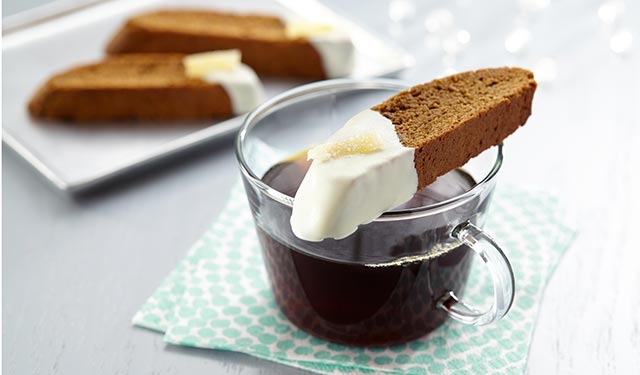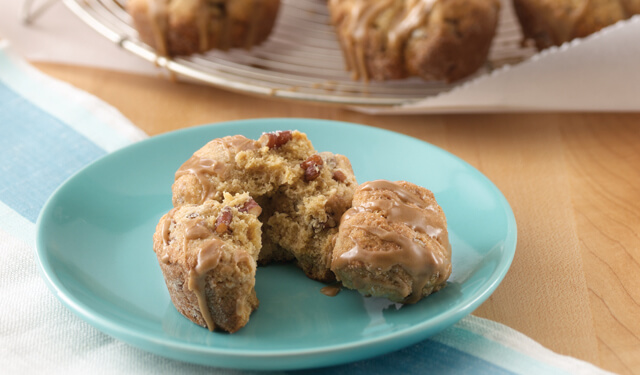
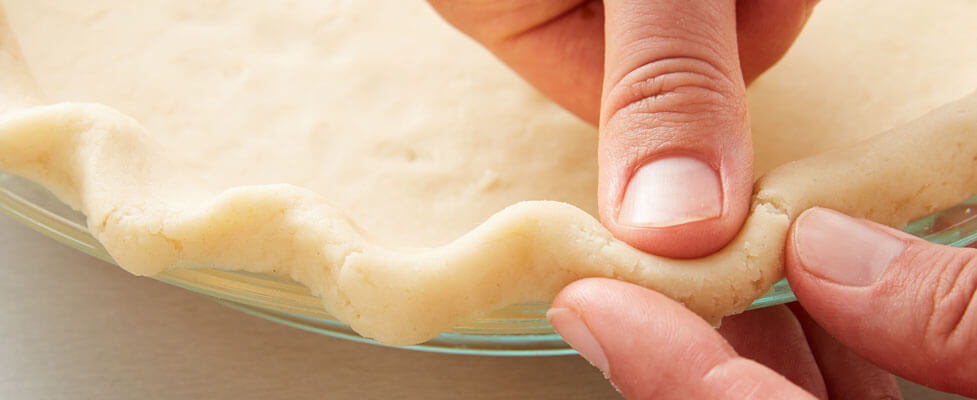
10 Secrets for Making Great Pie Crust
Pie crust can be intimidating, but with a little practice and our 10 tips for a perfect, flaky pie crust, you will be looking for excuses to make another pie!
 by
Land O'Lakes Test Kitchen
by
Land O'Lakes Test Kitchen
 by
Land O'Lakes Test Kitchen
by
Land O'Lakes Test Kitchen
Pie crust can be intimidating, but with a little practice and our 10 tips for a perfect, flaky pie crust, you will be looking for excuses to make another pie!
Everyone has different methods and even different recipes for making pie crust. You will develop your own way once you follow our recipe for Butter Pie Crust and the tips below.
Start with chilled ingredients
- Butter creates a sturdy, crisp pie crust. For this, it is important to keep all ingredients cold which will inhibit the development of gluten in the flour. Use butter right out of the refrigerator and add ice-cold water to make the dough.
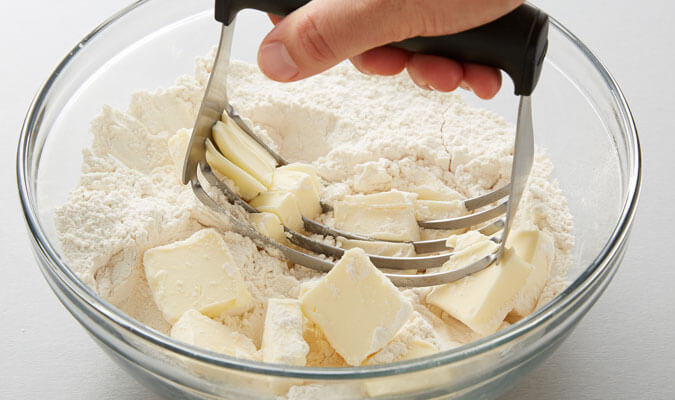
Add water carefully
- Use just enough water to make the pie crust hold together. Recipes usually give a range for the amount of water. Start with the least amount.
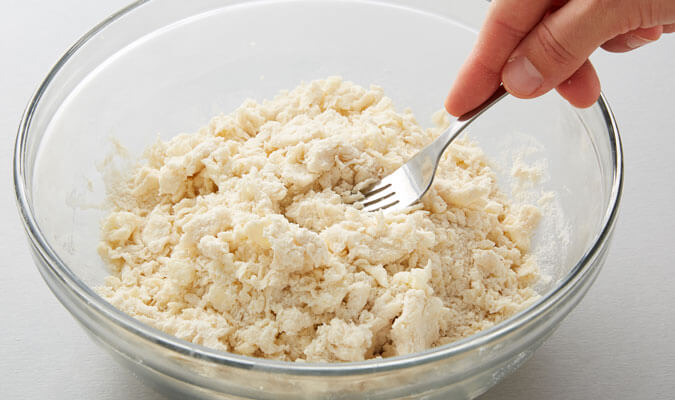
Why egg yolk in some recipes?
- If your recipe calls for an egg yolk, know that the yolk adds fat as well as natural lecithin, which makes the dough pliable and easier to handle. If you are struggling with handling the dough, try the egg yolk.
Why lemon juice or vinegar in some recipes?
- Adding an acid such as 1 tablespoon lemon juice or vinegar interferes with the elasticity of the gluten, making the crust more tender. We would recommend adding acid if your crust continues to be too tough.
Do not overwork the dough
- Do not over-handle the pie crust; overworking develops the gluten and toughens the dough. It’s okay to see flakes of yellow from the butter and egg yolk. When working the dough, use your fingertips instead of the warmer palms of your hand to prevent dough from getting too warm.
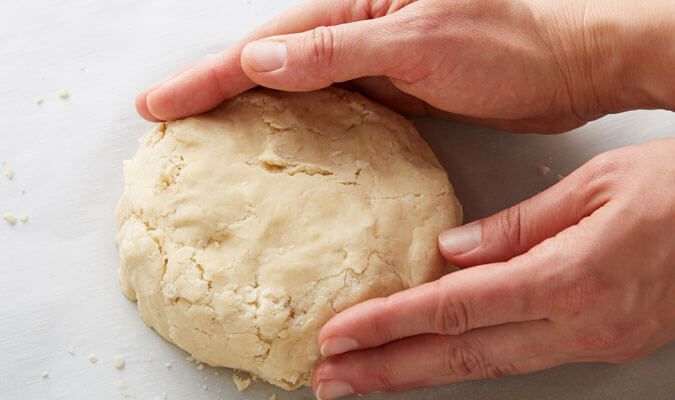
Shaping dough
- As the dough comes together, turn it onto a lightly floured surface and gently press into a ball. If the dough makes two crusts, cut the ball in half and flatten into two discs. If not rolling out immediately, wrap each disc of dough tightly in plastic wrap and refrigerate until ready to use.
Ready to roll
- When ready to roll out the dough, lightly flour the countertop or other surface (pastry cloth, silicone rolling mat, parchment or waxed paper). Position the rolling pin in the center of the disk of pie crust dough. First, imagine a face of a clock. Roll away from you toward the 12 o’clock position, easing the pressure as you near the edge to keep it from becoming too thin. Return the rolling pin to the center and roll toward the 6 o’clock position. Repeat rolling toward 3 o’clock and then toward 9 o’clock. Continue this process until the dough reaches the diameter needed for your pie pan.
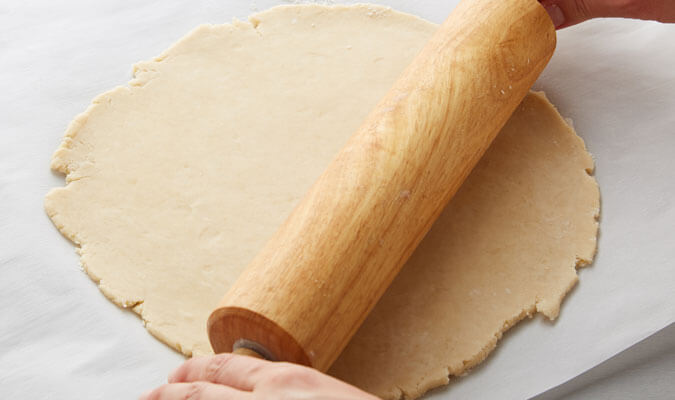
Handling the dough
- To ease dough into pie pan, fold dough into fourths; place in pie pan and unfold. Fold the overhanging dough under and flute edges. Here are some great tips for ways to edge your pie.
https://www.landolakes.com/expert-advice/decorative-pie-crust-edges/
Baking Instructions
- Follow baking instructions. Bake the pie in the lower third of the oven. Generally, bake pies at 425°F for 15 minutes. Then, reduce the heat to 350°F and bake 30 to 35 minutes or until filling is cooked through. Insert a knife tip to test if the pie is done.
Baking Tips
- To prevent excess browning of the edges during baking, cover the pie edge with a 2- to 3-inch wide strip of aluminum foil, and mold lightly around the edge of the pie. Bake as directed, removing the aluminum foil 15 minutes before the end of the baking time. If pre-baking ("blind baking") a pie crust making a cream pie, line the unbaked crust with foil or parchment paper and fill it with pie weights, dried beans or rice. Bake until the edge just begins to color. Remove the weights and carefully prick the bottom and sides with a fork to prevent air bubbles.
Our go-to recipe Butter Pie Crust is the place to start perfecting your pie baking skills.
Need a little filling inspiration to compliment your perfect crust? Here are a few of our favorite pies on the site!
Share Your Thoughts
Did you find this article helpful? Has it inspired you? What else would you like to know?




